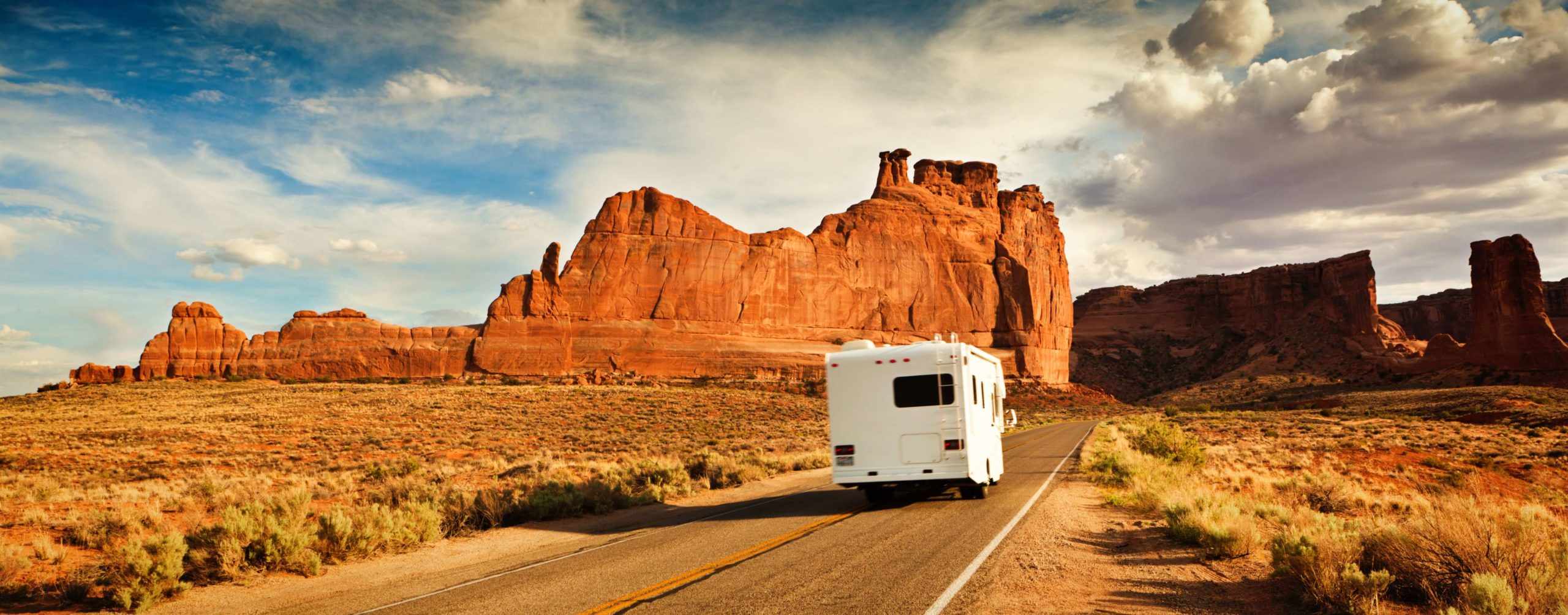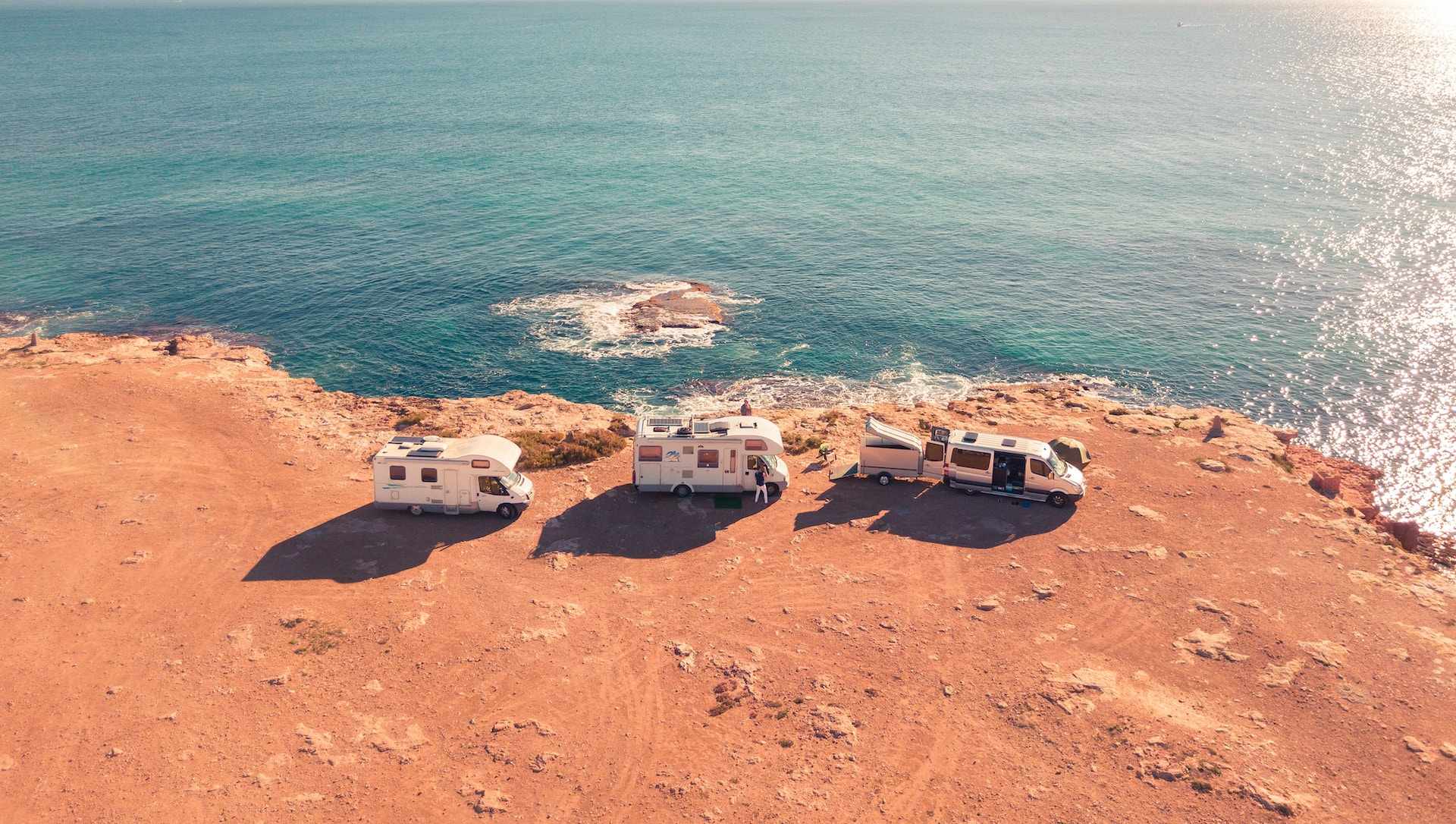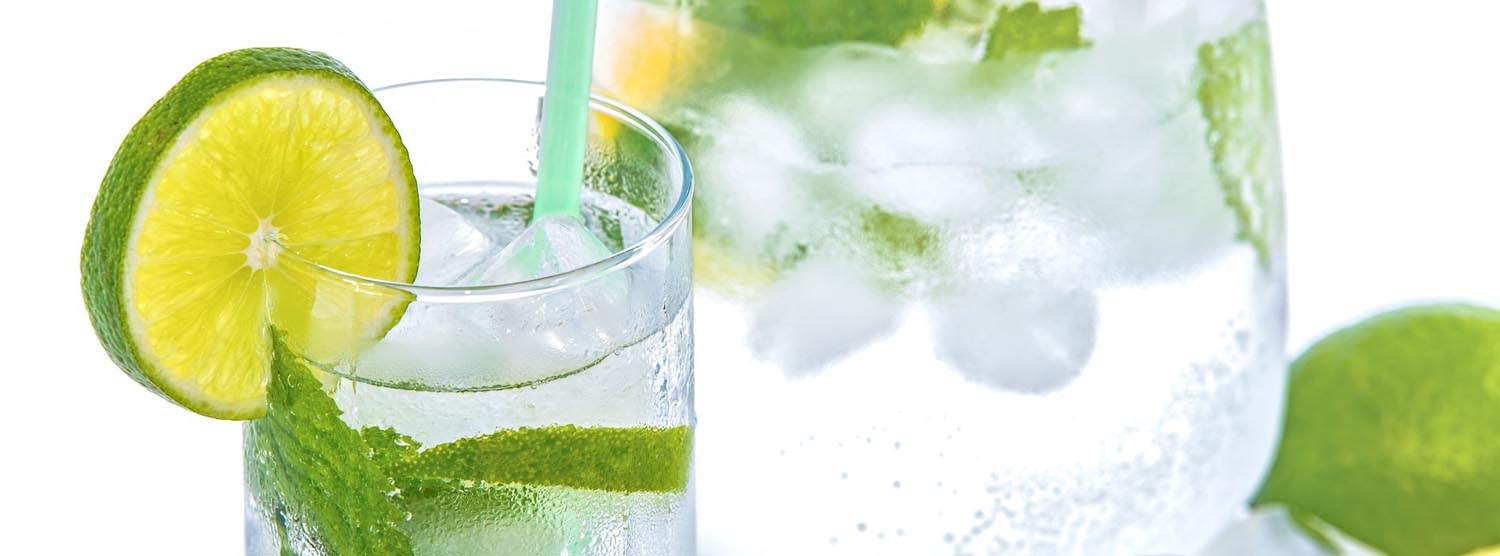As a new RVer, there are so many things to learn about your travel trailer or motorhome. While the best way to learn is by doing, it certainly helps to also do a little research before diving in head first. In this article, we’re going to talk about one of the most basic systems on your rig: the RV fresh water tank.
We’ll unpack how to fill it, how to maintain it, and other things to think about when it comes to this tank.
Try Before You Buy: RVs For Rent Near You
Every camper is designed differently, but most include a freshwater tank. This handy system is used for drinking, cooking, doing dishes, showering, and using the toilet when you are not hooked up to an outside water source. Learning how to fill and care for the freshwater tank is a definite necessity.
What is an RV freshwater tank?
Before we dive into how to fill your fresh water tank, let’s talk a little more about them and the other tanks you’ll find. There are usually three types of tanks on an RV:
- Fresh water tank: This is self-explanatory— it’s a tank that’s filled with fresh water. The water stored in this tank comes out of your taps.
- Grey water tank: The grey water tank is where your used water from the sink and shower go.
- Black water tank: The black water tank is where the waste from your toilet ends up. If a camper doesn’t have a grey water tank, the used water will also end up here.
The whole RV freshwater system is more than the tank, though. In order to draw water from the tank to your faucets, the system is also equipped with a water pump. Most people also use water pressure regulators if hooked up to city water, and many people have RV water filtration systems.
If you’re lucky, the water will also go through a water heater, which will allow you to have nice and warm showers. You might even have a water level monitor, which lets you know how much water is in your tank without having to physically look inside.
Using City Water Supply in an RV
If you are at a campsite with a water hook-up, there’s no need to worry about your RV fresh water tank. Most RVs have their water intake valves situated one of two ways. Some have separate connections for filling up the tank or using city supply. Others use the same connection but have a valve that allows you to switch between the two.
If you’re using city water and you have an intake valve, switch your intake valve to the option that says “city supply” or “local supply” and turn your water pump off. You only need to use the water pump when you are using water from your fresh water tank. In other words, if you have hooked a hose up to your RV at a campsite and are using city water, you are bypassing your fresh water tank. The pressure from the city spigot will push water through the hose and throughout your rig when you turn on a faucet or flush.
It’s also a good idea to have a water pressure regulator like this for your RV. That’s because campground water connections often have high pressure that can damage your RV plumbing. A regulator makes sure that the water entering your RV is always at the proper pressure.
Why It’s Essential to Fill Your RV’s Fresh Water Tank Correctly
Filling your RV’s fresh water tank properly ensures you have clean, potable water while on the road. It’s essential to avoid contaminants that could cause health issues or damage your RV’s water system. Regularly maintaining and filling your tank keeps your water safe for drinking, cooking, and showering.
How do you fill an RV fresh water tank?
Using your water tank comes in handy if you aren’t going to be using a hook-up at your campsite. But a freshwater tank doesn’t do much good if it isn’t filled with water!
Keeping RV Hoses Separate
Before you go looking for your freshwater fill valve, there’s one concept that is very important to know: separate hoses. You should have a hose like this that is dedicated entirely to your freshwater system. Do not use this hose to clean out a septic hose or even for washing your RV. Typically your fresh water hose will be white, however, some come in blue. Just make sure you keep it separate to avoid contamination of your drinking water.
Step One: Locate the Intake Valve
Once you’ve designated a hose for drinking water/fresh water, attach it to the fresh water intake valve (sometimes labeled “city water”). Attach the other end of the hose to your water spigot.
In the picture below, there is a lever that you can pull to fill or to bypass the water tank when hooked up at a campsite. If you have a lever, make sure its opened to let water into the tank.

Step Two: Keep an Eye on the Water Level Monitor
Before you open the spigot, locate your tank indicators inside your vehicle. Remember: tank indicators are notoriously inaccurate and visually seeing how full your tank is will always be more accurate than an indicator. Try to get a visual read on your tank if you can. If you have no visual, then use the tank indicators on your panel in the RV to tell you when the water tank is approaching full.
Step Three: Fill ‘Er Up!
Turn the hose on from the source and fill ‘er up!
Depending on how big your fresh water tank is, you may want to think twice about filling it completely up. Water weighs over 8 lbs. per gallon so it can add quite a bit of weight to your rig as you are traveling down the road. If you are headed to a boondocking site, where no water will be available, a full tank may make sense.
But if you are headed to a nice national park campsite with water and electrical hook-ups, you may want enough fresh water to drink, cook and use the restroom until you arrive at the campsite, but no more. Plan ahead.

When the tank gets close to full, be sure you are outside your vehicle with plenty of time to turn off the spigot. You never want to overfill the tank. Leave the tank valve on “tank fill,” unhook the hose and store it away from your septic hoses. It’s usually a good idea to store them in completely separate compartments, if possible.
Using an RV Water Pump
A lesson in water use within your motorhome or travel trailer includes a little knowledge about your water pump. Your pump can run off of a battery, meaning you don’t need to be hooked up to shore power. Somewhere within your vehicle is a switch to turn the water pump on and off.
Make sure the pump switch is flipped on when using your RV water tank. When the pump is turned on, you will hear it every time you turn on the water within your vehicle, such as when you run the water faucet or flush the toilet. It will stop running when you turn the faucet off or when the toilet is finished flushing. If you hear it when no water is running in your rig, you may have a water leak somewhere.
Best Practices for Filling Your RV Fresh Water Tank
- Sanitize Your Water System: Before long trips or after extended storage, use a sanitizing solution to clean the tank and water lines.
- Monitor Water Levels: Always monitor your fresh water levels to avoid running out while camping, especially when boondocking.
- Use a Water Pressure Regulator: To prevent damage to your RV’s plumbing, always use a water pressure regulator when connecting to an external source.
Cleaning Your RV Fresh Water Tank
Sometimes water can pick up a smell when it’s been stored for a while. If this is the case, you can drain the fresh water tank and use something like AquaShock Freshwater tank sanitizer to get that thing squeaky clean. There should be a drain near your fresh water intake valve that allows the fresh water tank to drain on the ground before you refill the tank.
Here is a great video from RVGeeks teaching you how to go through that entire process:
Common Mistakes When Filling Your Fresh Water Tank
- Using a Non-Potable Hose: Never use a garden hose as it can introduce bacteria and chemicals into your water system.
- Overfilling the Tank: This can cause spillage and even damage your RV’s plumbing system. Monitor the tank to avoid this.
- Skipping Filtration: Always filter your water before it enters the tank to ensure it’s safe and clean for drinking and cooking.
FAQs on Filling Your RV Fresh Water Tank
How often should I fill my RV’s fresh water tank?
It depends on your usage and travel style. If you’re boondocking or staying at campgrounds without hookups, check water levels daily. Refill when the tank drops below 50% to ensure you don’t run out.
What type of hose should I use to fill the fresh water tank?
Always use a white potable water hose, as it’s specifically designed to keep your water supply safe from contaminants.
Do I need a water pressure regulator when filling the tank?
Generally no, a water pressure regulator is only needed when you’re continuously connected to the city water hose at an RV park.
How can I keep my fresh water tank clean?
Sanitize your tank by mixing ¼ cup of bleach per 15 gallons of water, letting it sit, and flushing the system thoroughly afterward.
Can I overfill my RV fresh water tank?
Yes, this can lead to water waste and damage to your RV’s plumbing. Always monitor the water level closely to prevent an overflow.
Should I use a water filter when filling my tank?
Yes, using a water filter ensures that the water entering your tank is clean and free of harmful contaminants, which is particularly important when traveling to unfamiliar areas.
How do I know when my fresh water tank is full?
Many RVs have built-in sensors that indicate the water level. If yours doesn’t, watch for water overflow from the inlet or use a clear hose to monitor the flow.
Conclusion
Well, you’ve conquered the freshwater system in your new RV, and you did it without floating away. Now, you can move on to more exciting activities, like finding the perfect RV for your first camp trip. Happy travels!








